Teen cancer fighter among first in world to have experimental implant surgery
Queensland schoolgirl Asha Morris has had a 3D-printed implant transplanted into her shin bone after being diagnosed with cancer, earning her the tag EP2 – experimental patient 2.
QLD News
Don't miss out on the headlines from QLD News. Followed categories will be added to My News.
TEENAGER Asha Morris has only “very foggy” memories of her 16th birthday – the day she began treatment for cancer and the beginning of a journey that would see her dubbed EP2 – experimental patient 2.
The Brisbane schoolgirl had pioneering surgery at the Queensland Children’s Hospital earlier this year to remove a large piece of her left shin bone, replacing it with a 3D-printed implant.
She’s only the second person in the world – and the first cancer patient – to undergo the revolutionary operation using an implant designed to encourage her own tibia to regenerate.
Eight months later, she can already put some weight on her leg and has transitioned from wheelchair to crutches with scans showing the bone is starting to regrow.
QLD TEEN’S MIRACLE AFTER BEING DAYS FROM DEATH
PREGNANT MUM’S LIFE OR DEATH DECISION
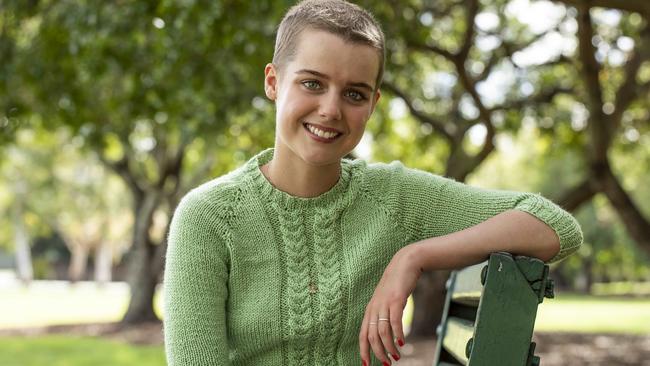
Asha was diagnosed with Ewing sarcoma, a rare type of bone and soft tissue cancer, in October, 2019.
To protect her fertility, she had ovarian stimulation and some of her eggs collected and frozen in the weeks before her first round of chemotherapy on her 16th birthday in November the same year.
“I only have very foggy memories of my birthday but we have a lot of videos,” she says, wistfully.
“The whole room was full of presents. All my friends had come and celebrated with me. It was a lovely birthday from what I can see but I hardly remember it.”
Amid the frequent hospital admissions and doctors’ appointments, she says it all happened too quickly for her “to be super scared”.
“I don’t think at any point, I really let the thoughts of what cancer can result in slip in,” Asha says.
“I kind of just went: ‘Yeah, I have cancer and they’re going to do what they can to get me better.”
In March this year, after four months of chemotherapy to shrink her cancer, doctors removed the tumour from her left tibia – the bone that bears most of the body’s weight – in life-saving surgery.
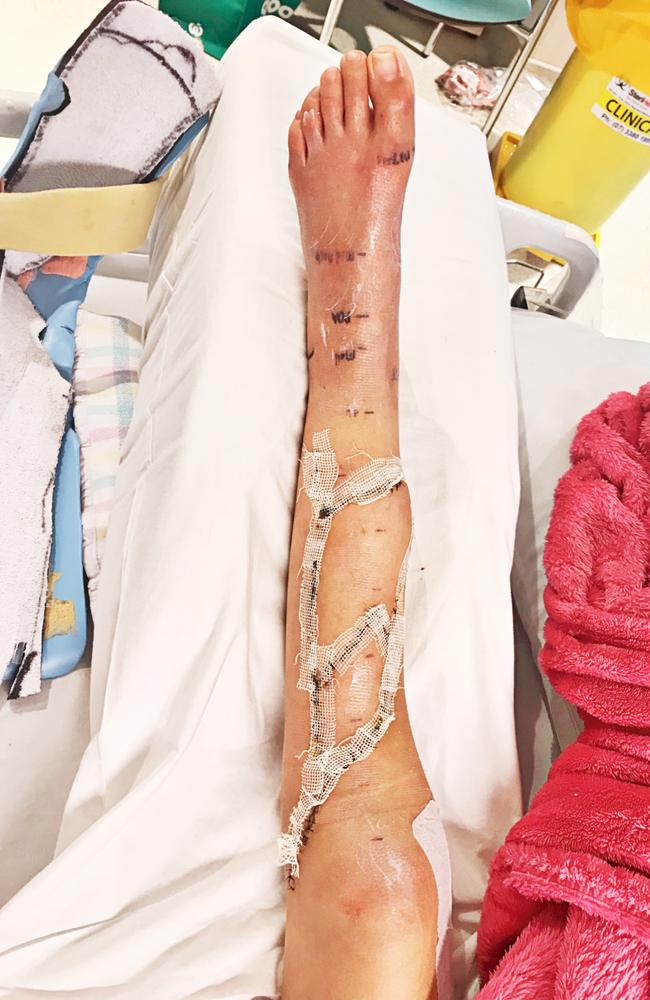
With approval from the Queensland Children’s Hospital clinical ethics service, during the same operation they replaced 12.5cm of removed bone with an experimental, custom-designed 3D-printed scaffold.
A titanium plate connects the implant to her remaining tibia bone.
Inside the scaffold, plastic and reconstructive surgeon Michael Wagels placed bone-growing tissue, known as periosteum.
His colleague, orthopaedic surgeon Martin Lowe, who was also involved in the nine-hour operation, says the periosteum, a membrane a few millimetres thick, which covers the surface of bones, can be peeled off like “the skin of a banana”.
Periosteum was harvested from the thigh bone on Asha’s left leg, along with a blood vessel.
In painstaking microsurgery, that blood vessel was then plumbed into the vasculature on her lower leg to keep the tissue alive while it grows new bone inside the implant.
The hope is Asha’s own bone will regenerate enough to replace the biodegradable polymer scaffold as it slowly dissolves inside the body and disappears.
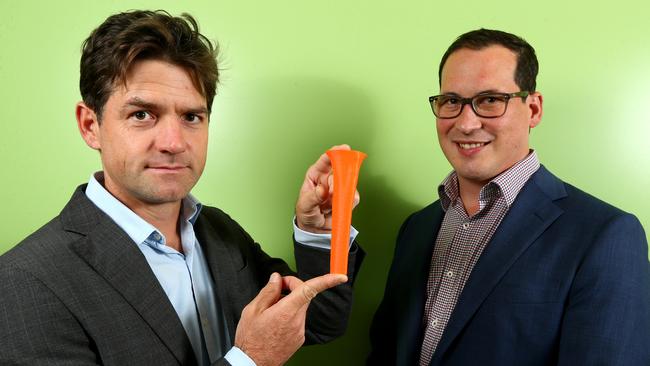
“I feel really lucky to be given the opportunity,” Asha says of the chance to take part in the pioneering surgery.
“I’m very excited to see how much the bone grows. The way they’ve described it to me is that they couldn’t be happier with how it’s gone.
“It just feels like this is the future now. I want to pursue a career in medicine and this has really clarified that for me. I just feel blessed that it came along when it did.
“Yes, I have some big scars on me but I’m very proud of my scars. I’m very honoured to have them as a constant reminder of what I’ve been through and the people who have worked on me.”
Asha’s surgery was only the second time Dr Wagels had implanted a 3D-printed tibia inside a patient.
Three years ago, the technique saved the leg of Reuben Lichter, then 27, after an infection had destroyed his shin bone. Mr Lichter is back walking again, but the procedure is still considered highly experimental.
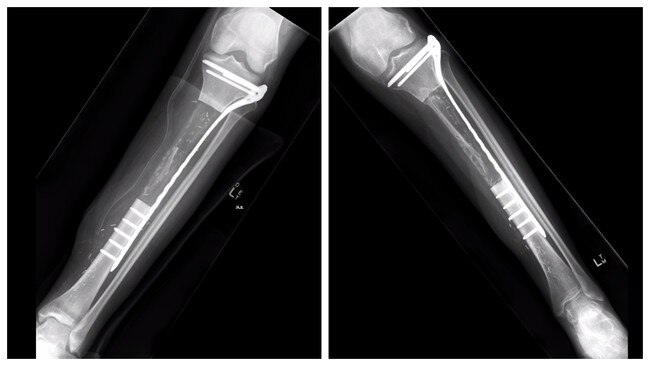
Since her surgery, Asha has embraced being EP2 – experimental patient 2.
So much so, she plans to have EP2 tattooed in white ink somewhere on her body as a reminder of her part in medical history.
Without the innovative surgery, Asha would have had several different options, including a bone graft from a deceased donor, transforming her fibula into a tibia, or having a metal prosthesis implanted.
Dr Lowe says all of the alternatives have “significant complication rates”.
Asha’s oncologist Wayne Nicholls says while the other options would have probably needed to be repaired or replaced during her lifetime, possibly multiple times, the hope is that will not be necessary if her own bone regenerates enough to restore her tibia.
“Bone is the most amazing substance, it’s the lightest, strongest thing in the world,” Dr Nicholls says. “Nothing else beats it.”
Asha needed more chemotherapy after her surgery and then had six weeks of radiation, ending her treatment in September.
She had this year off school but plans to start Year 11 in the New Year.
While she will need regular scans for the next 10 years, the cancer has not spread beyond her tibia.
Given the rarity of her condition – only about 30 young Australians are found to have Ewing sarcoma annually – diagnosis can often be delayed, with general practitioners suspecting sports injuries or growing pains, rather than cancer.
But Asha’s was picked up soon after she first developed pain in her leg, thanks to a vigilant general practitioner, who ordered scans.
“It was a pretty quick diagnosis,” Dr Nicholls says.
As she prepares to return to school after her treatment, Asha and her mother Luci, are having to adjust to no longer seeing some of the health workers that have become like family.
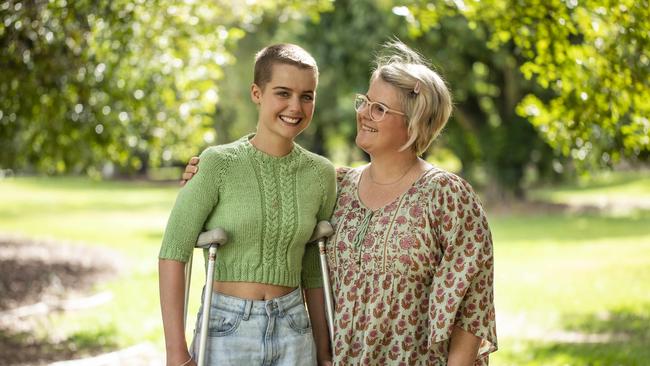
“We don’t obviously want Asha to be sick anymore but really, it would be lovely to see them every day,” Ms Morris says.
The Mum of three girls, including Indiah, 18, and Phoebe, 14, couldn’t be prouder of how Asha, who turned 17 earlier this month, has handled her cancer journey.
“Right in the middle of her teenage years when everybody’s dealing with who’s the cutest boy, Asha has accepted what was handed to her so gracefully and with just amazing courage,” Ms Morris says.
While Asha continues to recover, grateful to be given the opportunity to have the revolutionary operation, Dr Wagels says he has a “queue of people” begging for 3D-printed implants for different reasons.
He’s previously replaced part of a man’s skull with a similar biodegradable scaffold, designed to allow the patient’s own bone to regrow.
And he’s used another cutting edge scaffold to successfully conceal a congenital deformity, dubbed “funnel chest” – in a young Queensland woman, who had previously undergone several failed reconstruction attempts. The implant, filled with the patient’s own fat cells, will slowly dissolve, leaving her own tissue in place.
Dr Wagels says Brisbane is fast becoming a world centre for biofabrication – a field that’s been described as turning science fiction into reality.
“It’s really going to start taking off,” he says.
To donate to research at the Queensland Children’s Hospital: childrens.org.au


